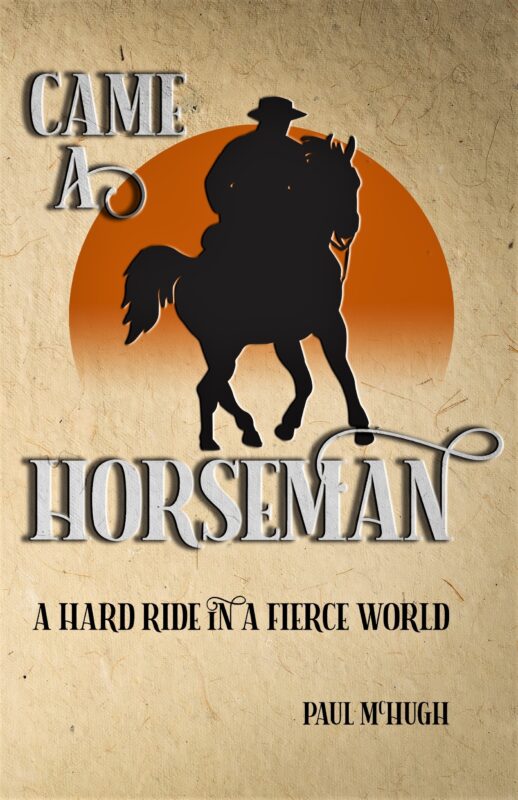California North Coast Series
Paul McHugh, Outdoors Writer
September 06, Part II
On our first day, we first touched shore in California in the sumptuous Smith River estuary, after a peaceful five-mile paddle down from Oregon’s Winchuck River on Tuesday.
Greeted by a river otter and harbor seals at the entrance, we were escorted further into the estuary by shorebirds and waterbirds, including a marsh hawk. Western sandpiper flocks scudding about in synchronized flying displays that would put the Blue Angels to shame.
The Wild Smith
The Smith is famed as California’s wildest, healthiest major stream. Despite all the critters in the estuary, most of that pristine area lies further upstream, beyond the highway 101 bridge. Below the bridge, where the Smith River floodplain spreads out in a broad triangle, two rather differing forms of agriculture butt heads.
On the river’s north bank, 450 acres of intensively farmed fields make the hamlet of Smith River the “Easter Lily Capitol of the World.” This achievement requires tons of pesticide use, to fight pests ranging from fungi to nematodes (roundworms). More than 12 million lily bulbs, worth $6-7 million are grown annually.
Meanwhile, sprawled across the south bank, the 2,500-acre dairy farm of Blake and Stephanie Alexandre has just achieved certification as a fully organic operation last year, after six years of laboring toward that goal.
The estuary was flat, shimmering silk. Our bows sliced smoothly through it as easily as knives.
I showed John Weed and Bo Barnes, my companions on this 400- mile, sea kayak voyage to San Francisco, our first rest stop – a quiet cove near a sandbar. Weed stayed to set up camp, while Bo and I glided further, to a spot where spotted heifers grazed on tall, vivid green grass. This was the Alexandres’ organic dairy.

Alexandre Family: Feeding pasture-raised chickens at the family’s organic farm on the south bank of the Smith River.
Photo by Michael Maloney, S.F. Chronicle
We landed on a riverbank, then reached Stephanie Alexandre by cellphone. We put in our order: 18 fresh eggs from hens raised by the Alexandres’ five kids. After Stephanie drove to the shore in a truck to deliver the goods, we paid $4 into the Alexandre kids college fund. Then she awarded us a bonus gift of two cold mason jars, one full of organic whole milk, and the other filled with a thick, purple, homemade berry kefir.
I took a swig of the milk, smiled, and handed the jar to Barnes.
“Can’t believe what I’m tasting!” he said. “This is milk? The stuff I’ve been buying all these years, that they call milk? Holy cow!”
Stephanie Alexandre, 40, a willowy woman who wears a Leatherman tool on her belt, flushed with pride.
“What you taste is the complex nutrients, a sweetness from all the proteins put in by cows that get to graze on organic fields,” she said. “I think it’s a tragedy that fresh milk like this is not more widely available to consumers. Human bodies really respond to it, because they sense how good it is for them.”
The sheer thrill of chugging something with such unalloyed delight makes one eager to find out more about it.
The story of how the Alexandres brought this style of farming to a region unused to it began at Cal Poly’s ag department in San Luis Obispo, where they met and married. Blake had been raised at Ferndale on the Eel River (about 90 miles south). After a stint on a Southern California ranch, they brought organic technique to the Alexandre family’s Ferndale ranch in 1998. They helped inspire other members of the Humboldt Creamery coop to adopt the same philosophy. The Alexandres had already expanded horizons to the north, acquiring acres around the Smith through lease and purchase. They moved up to raise their family by the Smith in 1992.
Organic Along the Smith River
“Our interest in organics began as a pure business decision,” Blake Alexandre, 42, told me when I met him. He’s a tall, broadshouldered man with a black goatee and an easy grin.
“Giant, efficient dairy operationss can run 5,000 cows or more. We just can’t compete. We had to develop some sort of niche market, instead. Going organic made sense. It suits a cool coastal environment, where it’s easier to grow lush green grass and keep cows healthy.”
It may have begun as an economic choice, so they could score that higher margin organic producers enjoy. But by attending conferences with themes like, “Food is medicine, farmers are the healer,” the Alexandres soon came to adopting and acting upon a deep level of genuine belief.
“Food from modern industrial farms has lost much of its nutrition value,” says Blake.
“If you were to take an apple from 1910 you’d see it was packed with nutrients. The new one is mainly loaded with sugar; that’s about it. Many ingredients are missing,” asserts Stephanie.
Over on the north bank, lily farmers perceive many microbes and microfauna in the soil as enemies, who must be bombed with an alphabet soup of agri-chemicals, such as 2,3-Dihydro-2,2-dimethyl-7-benzofuranol methylcarbamate (“Rampart”) and metham sodium gas.
But on the south bank, Blake Alexandre says, “We try to see all the bacteria and bugs in the soil as little armies that work for us. They run the foundation of our biological system here. We try not to do things that harm them.”
As below, so above. Atop that dirt, the Alexandres encourage a broad mix of plant species for their cows to munch on, not just one particular grass or grain.
“A monocrop, having your field full of just one plant, that’s very vulnerable,” Blake says. “Something attacks it, you’re done. Growing a mix is healthier, more natural and durable.”
So his fields are now a melange of colors, heights, textures and fragrances. Stalks and leaves wave in cool coastal breeze above a soil naturally growing more loose, spongy and jammed with nutrients.
Crops aren’t the only thing they’re growing here. Stephanie Alexandre says, “We are blessed. Our kids seem to like farm life. We must have them totally brain-washed.”
The children — Savannah, 6, Dalton, 9, Vanessa, 11, Christian 13, and Joseph, 14 — all have chores. Savannah, the youngest, helps with the housework. Outdoors, she’s the sidekick for her siblings, but also assists in raking grass and feeding calves. The four eldest actually perform tractor work.
Now, this rural brood run their very own farm operation. They drag around a mobile barn so that free-range chickens can forage behind the grazing cows. The chickens scratch up insects and parasites, while working droppings into the soil, and aerating it.
The Alexandre Kids have already sold 30 dozen eggs from their 140 laying hens. Begun over the summer, their little egg business is clearly on a roll.

Stephanie Alexandre gives Paul McHugh (right) and fellow kayakers 18 fresh organic eggs and a half gallon of fresh organic milk. Photo by Michael Maloney. S. F. Chronicle.
It sounds idyllic. But make no mistake, whatever our cultural pre-conceptions may be about organic farmers, no tie-dyed t-shirts, patchouli oil or Grateful Dead background music is involved in forging of this reality. This is mainstream, rural America taking a keen interest in nutrition.
Blake asserts that his basic political stance consists of patriotic, rock-ribbed, conservative Republican values. He counts Ronald Reagan and Ted Nugent among his heroes. The “Eco Cows” license tag on his flatbed truck hangs below a Bush/Cheney campaign sticker on the cab’s rear window.
However, their benign views about natural flora and fauna extend to all the wildlife in the estuary. The Alexandres are enlarging a farm pond to use as a small wildlife sanctuary. They are midway along toward restoring riparian forest habitat around a mid-field slough, and want to enhance coho salmon spawning areas in Morrison Creek, a waterway which bisects their property.
Blake Alexandre sometimes hears himself slandered as, “a bleeding-heart environmentalist.” He cops to the environmentalist part, while separating himself from “those protest fools, who don’t get the first thing about what it takes to build a road or a business, either one.”
“The organic path is the right game at the right time. Our heads are completely into it,” Blake says. “It’s fully consistent with true conservatism. I can build a business that lets me make payments on my land. And it’s truly sustainable. This way, we’ll be able to feed more people for a much longer time.”
We brought the jars of milk and kefir back to Weed, and he exclaimed over them too. But don’t worry. You’ll be able to get your taste. The Humboldt Creamery intends to market a super premium organic ice cream using milk from the Alexandres and other organic dairies in the fall.
A Mostly Clean and Pristine Stream
By Paul McHugh
Named for explorer Jedediah Smith, the first Anglo to cross it (174 years ago), the Smith River has long been lauded as California’s most pristine and intact major stream. More than ten percent of its 3,100 undammed miles have federal Wild and Scenic status. Its forks glitter amid durable greenstone canyons and basalt hills that help stabilize its environmental health. Of 435,000 acres in the drainage, 305,000 acres enjoy special forestry rules, due to a National Recreation Area designation.
Angling the Smith River
Forests that cloak Smith River hills range from virgin redwood to Shasta red fir and even Port Orford cedar. Such primal verdure supports a healthy native bestiary. On a hike near the Siskiyou Wilderness in 1997, I once spotted a wolverine — almost the equivalent of a unicorn sighting. These huge, irascible weasels require a large and stable, old-growth forest environment to survive; they have been virtually extirpated elsewhere in California.
To the delight of anglers, the Smith also supports exceptionally healthy runs of steelhead trout, Chinook salmon and cutthroat trout. Even endangered coho salmon thrive in tributaries.









